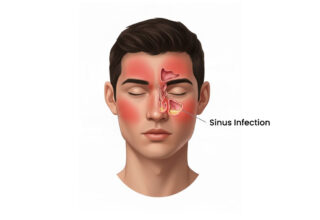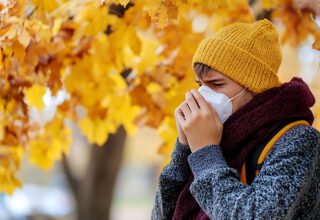When we think of a panic attack, we often picture someone hyperventilating, clutching their chest, or visibly in distress. But not all panic attacks look like this. Some are quiet, hidden, and invisible to the people around— yet, just as terrifying or overwhelming to the person experiencing them. These are called silent panic attacks and can be confusing, and hard to explain.
Let’s take a closer look at what silent panic attacks are, how they feel like, why they may happen, and what you can do to cope with them.
What Is a Silent Panic Attack?
A silent panic attack is just like as it sounds: a panic attack without more obvious or noticeable physical symptoms. Unlike a typical panic attack that might involve loud breathing, visible shaking, or crying, silent panic attacks tend to be internal. That means it may appear from the outside that the person is completely normal, but inside, they’re experiencing a storm of anxiety and fear.
Signs and Symptoms of a Silent Panic Attack:
Although silent panic attacks don’t show any obvious physical symptoms, there are many signs and symptoms that may help the person recognise their silent panic attack:
- Sudden overwhelming fear or a sense of impending doom
- Racing or pounding heart
- Shortness of breath (without visible gasping)
- Chest tightness or discomfort
- Lightheadedness or dizziness
- Tingling sensation in hands and feet
- Nausea
- Difficulty focusing or concentrating
- Sense of being detached from your surroundings (derealisation)
- Sense of being separated from your body, thoughts, or feelings (depersonalisation)
It’s worth noticing that not everyone having a silent panic attack experiences all of these symptoms. Sometimes it’s just a sudden wave of dread, a tight chest, or racing heart that comes out of nowhere.
Causes of Silent Panic Attacks:
The causes of a silent panic attack are similar to that of a regular panic attack. Common triggers may include:
- Genetics
- Family history of panic attacks
- Personal history of anxiety, depression, or any other mental health condition
- Untreated trauma, especially childhood trauma or PTSD
- Chronic stress
- Anxiety disorders
- Certain medications or withdrawal
- Excessive caffeine intake or stimulant use
- Major life transitions or emotional disturbance
Triggers for silent panic attacks can be different for different people. Some may find that high-stress environments or some social situations may trigger their attacks, while others may experience them unexpectedly, without any clear cause.
Treatment Options for Silent Panic Attacks:
If silent panic attacks start happening more often, or affecting your daily life, it might be time to check in with your doctor and get support.
A professional healthcare provider will assess your condition, and suggest a treatment plan tailored to your needs.
There are therapies that can be helpful in identifying triggers and building healthier ways to cope. These may include :
- Cognitive behavioral therapy (CBT)
- Dialectical behavior therapy (DBT)
- Exposure therapy
In some cases, your doctor may prescribe you medications like anti-depressants or anti-anxiety medicines, to ease your anxiety and decrease the frequency of your panic attacks.
Tips to Cope With Silent Panic Attacks:
While you can’t always stop a panic attack instantly, there are effective ways to manage the symptoms until it passes. Try simple strategies like:
- Acknowledge what’s happening:
Remind yourself that you’re experiencing a silent panic attack, not a life-threatening situation. Awareness can help reduce fear and stay grounded.
- Focus on deep breathing:
Slow, steady breaths can help counter hyperventilation and calm your nervous system. Breathe in gently through your nose, and exhale slowly from your mouth while focusing on the rhythm.
- Try the 5-4-3-2-1 grounding technique:
Engage your senses to keep yourself in the present moment. 5 things you can see, 4 things you can touch, 3 things you can hear, 2 things you can smell, and 1 thing you can taste.
- Repeat reassuring phrases:
Try saying to yourself things like “This feeling will pass”, “I am safe”, or “This is uncomfortable, but not dangerous”. These affirmations will help reduce your fear and anxiety.
- Relax your muscles:
Panic often comes with muscle tension. Try clenching and releasing your one muscle group at a time. Start from your toes and work your way up. This gives your body a signal that you’re safe.
- Change your environment:
If possible, step out of the situation that triggered your panic attack. Go outside for fresh air, splash some water on your face, or move to a quieter space. Even a small change can help reset your body’s stress response.
Here are some tips that can help prevent panic attacks in the long run:
- Practice regular mindfulness and meditation. Just 10 to 15 minutes a day can help lower your anxiety and prevent future panic attacks
- Exercise regularly as physical activity helps reduce your stress
- Limit caffeine and alcohol intake as these can trigger or worsen the anxiety in many people
- Get quality sleep, as poor sleep can increase anxiety and make your body more reactive to stress
- Track your triggers by keeping a journal of when your panic attack happens, what you’re doing, or how you felt
- Build a support system. Talk to a trusted friend or family member and let them know what helps you so theft can provide support when you need it
- Consider therapy. Working with a mental health professional can help you process your fears and develop coping skills.
Read more about natural ways to cope with anxiety.
Final Thoughts:
Silent panic attacks may not be visible to others, but they’re very real to the people experiencing them. Just because someone looks fine, doesn’t mean they’re not struggling.
If you’re dealing with this, give yourself proper care and don’t hesitate to seek help.
And if you know someone who might be suffering silently, your patience, kindness, and support can mean the world to them.
Remember, with time, understanding, and right support, it can get better!








